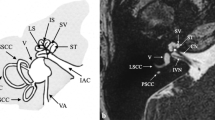Abstract
Background: In evaluating the effectiveness of ultrasound as a screening tool for craniosynostosis it was discovered that sonologists and sonographers needed more experience scanning and visualizing cranial sutures on ultrasound. Objective: To create an ultrasound simulator to train radiologists and technologists to locate and recognize patent and fused cranial sutures in children. Materials and methods: The hypoechoic appearance of patent sutures was simulated by cutting lines into life-sized plastic doll heads and filling them with a commercial hypoechogenic material. Fused hyperechoic sutures were simulated by not cutting into the hard plastic region of a suture. The simulator’s teaching value was evaluated on three radiology residents and three fellows. Subjects performed pre-training scans on unknown simulators, received feedback and an opportunity to scan a training simulator, and then performed post-training scans on random unknown simulators. Accuracy was recorded as percentage of correctly demonstrated sutures. Results: The suture simulator reproduces the sonographic appearance of patent and fused cranial sutures. Accuracy of acquisition, interpretation, and overall diagnosis increased from 64 to 91%, 79 to 91%, 61 to 97%, respectively, between pre and post training scans. Conclusion: An ultrasound simulator can reproduce the appearance of patent and fused cranial sutures in children and can be used to train radiologists and technologists in the performance of a screening protocol.




Similar content being viewed by others
References
Lajeunie E, Le Merrer M, Bontaiti-Pellie C et al (1995) Genetic study of nonsyndromic coronal craniosynostosis. Am J Med Genet 55:500–504
Vannier MW, Hildebolt CF, Marsh JL, et al (1989) Craniosynostosis: diagnostic value of three-dimensional CT reconstruction. Radiology 173:669–673
Rollins N, Sklar F (1996) Factitious lambdoid perisutural sclerosis: does the “sticky suture” exist? Pediatr Radiol 26:356–358
Brenner D, Elliston C, Hall E, et al (2001) Estimated risks of radiation-induced fatal cancer from pediatric CT. AJR 176:289–296
Hall EJ (2002) Lessons we have learned from our children: cancer risks from diagnostic radiology. Pediatr Radiol 32:700–706
Sze RW, Parisi MT, Sidhu M, et al (2003) Ultrasound screening of the lambdoid suture in the child with posterior plagiocephaly. Pediatr Radiol 33:630–636
Soboleski D, McCloskey D, Mussari B, et al (1997) Sonography of normal cranial sutures. AJR 168:819–821
Albright AL, Byrd RP (1981) Suture pathology in craniosynostosis. J Neurosurg 54:384–387
Hertzberg BS, Kliewer MA, Bowie JD, et al (2000) Physical training requirements in sonography: how many cases are needed for competence? AJR 174:1221–1227
Monsky WL, Levine D, Mehta TS, et al (2002) Using a sonographic simulator to assess residents before overnight call. AJR 178:35–39
Knudson MM, Sisley AC (2000) Training residents using simulation technology: experience with ultrasound for trauma. J Trauma 48:659–65
Acknowledgements
The authors thank the University of Washington Royalty Research Fund for its support of this research project and Ms. Kirsten Lawson for assistance in the preparation of the medical illustrations.
Author information
Authors and Affiliations
Corresponding author
Rights and permissions
About this article
Cite this article
Ngo, AV., Sze, R.W., Parisi, M.T. et al. Cranial suture simulator for ultrasound diagnosis of craniosynostosis. Pediatr Radiol 34, 535–540 (2004). https://doi.org/10.1007/s00247-004-1196-6
Received:
Revised:
Accepted:
Published:
Issue Date:
DOI: https://doi.org/10.1007/s00247-004-1196-6




